Trump Tweets, The World Reacts
Trump Tweets, The World Reacts
Understanding What Is Relevant and Why
Edited by Regina Luttrell
LEXINGTON BOOKS
Lanham Boulder New York London
Published by Lexington Books
The Rowman & Littlefield Publishing Group, Inc.
4501 Forbes Boulevard, Suite 200, Lanham, Maryland 20706
www.rowman.com
Unit A, Whitacre Mews, 26-34 Stannary Street, London SE11 4AB
Copyright 2018 by The Rowman & Littlefield Publishing Group, Inc.
All rights reserved . No part of this book may be reproduced in any form or by any electronic or mechanical means, including information storage and retrieval systems, without written permission from the publisher, except by a reviewer who may quote passages in a review.
British Library Cataloguing in Publication Information Available
Library of Congress Cataloging-in-Publication Data
Library of Congress Control Number: 2018936926
ISBN: 978-1-4985-6308-6 (cloth)
ISBN: 978-1-4985-6309-3 (electronic)
 The paper used in this publication meets the minimum requirements of American National Standard for Information SciencesPermanence of Paper for Printed Library Materials, ANSI/NISO Z39.48-1992.
The paper used in this publication meets the minimum requirements of American National Standard for Information SciencesPermanence of Paper for Printed Library Materials, ANSI/NISO Z39.48-1992.
Printed in the United States of America
Acknowledgments
I would like to begin by first acknowledging the contributions of the professors that authored chapters in this volume. Without your original research, time, and expertise this book would still be just an idea. Thank you for trusting me and being a part of what has become a solid contribution to the literature.
My gratitude to Nicolette Amstutz and Lexington Books for supporting the book and seeing its value within the larger academic community.
Last, but never least, to those that matter most, Todd, Emma, and Avery, for your support.
Introduction
America Under a Trump Administration
Vicissitudes in Communication
Regina Luttrell
When the act of sending a tweet can destroy reputations, propel a company into turmoil, or move economic markets, it is not simply a tweet anymore. President Donald Trumps social habits have prompted an evolution within the communication landscape among journalists, politicians, government officials, and businesses alike. During his campaign, and well into his presidency, the president has used Twitter to communicate his reactions toward a multitude of topics. With this sentiment in mind, the following points are put forth for consideration.
After President Trump tweeted Toyota Motor said will build a new plant in Baja, Mexico, to build Corolla cars for U.S. NO WAY! Build plant in U.S. or pay big border tax. Toyotas U.S.-traded shares fell almost 1 percent, lowering $2 billion from Toyotas total market value. A similar tweet targeting Lockheed Martin stated Based on the tremendous cost and cost overruns of the Lockheed Martin F-35, I have asked Boeing to price-out a comparable F-18 Super Hornet! resulting in the companys shares falling approximately 2 percent, while shares of Boeing were up 0.5 percent. This tweet cut Lockheed Martins market value by nearly $1.2 billion. Even private citizens, including eighteen-year-old Lauren Batchelder, are not immune to becoming a target of Trumps Twitter lashings. The president tweeted The arrogant young woman who questioned me in such a nasty fashion at No Labels yesterday was a Jeb staffer! HOW CAN HE BEAT RUSSIA & CHINA? The following morning Batchelders Facebook account, email, and voicemail were filled with threatening, often sexually overt, messages from angry Trump supporters condemning her for her actions. Batchelder fled into hiding as her story was featured in main stream media and across social media outlets. In an analogous story, New York Times journalist, Serge F. Kovalesk, who suffers from arthrogryposis, was mocked at a Trump rally for his disability, Trump supporters cheered and jeered. The presidents opinions on the media have also been widely documented, including his assertion of CNNs fake news, the New York Times failing, and Buzzfeed garbageall the while launching a full-throttle attack on the integrity of journalism. Respected journalist, Dan Rather, came out of retirement to launch News and Guts, which promotes his vision of real journalism, news of integrity, and, as he would say, a play no favorites, pull no punches brand of reporting. In these turbulent times, the public seeks nothing more than the truth. To further complicate matters, Kellyanne Conway, a trusted advisor to President Trump, introduced the notion of alternative facts, prompting the Public Relations Society of America to issue a statement condemning alternative facts as unethical. President Trump has even gone so far as to tweet Just heard Foreign Minister of North Korea speak at U.N. If he echoes thoughts of Little Rocket Man, they wont be around much longer! in response to the North Korean leader, Kim Jong Un, and his continued development of nuclear weapons. The president has also used Twitter to publicly criticize the British prime minister, Theresa May, when he retweeted anti-Muslim videos from a far-right British political group. Theresa @thersa_may, dont focus on me, focus on the destructive Radical Islamic Terrorism that is taking place within the United Kingdom. We are doing just fine!
As researchers we must ask ourselves what implications these interactions have, both within the United States and on the international stage. An insightful examination into the relevancy and importance of communication on social topics is one of the underlying premises of the book. The following chapters aim to illustrate and articulate the intimate connection between theories presented in communication and the mediums through which President Trump communicates. Drawing on a range of theoretical and empirical perspectives, this collection examines several transformations and implications of President Trumps influence on the social sphere, within economies, and the communications profession.
This text is appropriate to be utilized as a reference for both educators and social scientists who teach in the areas of public relations, journalism, social media, and mass communication. Graduate and undergraduate students will also find that many topics included in the book provide a foundation to better understand the implications of the social habits of arguably one the most influential men in modern society.
Individual chapters focus on four core areasjournalism, government, social media, and business. The objective of each chapter is to provide insight on the impact of the new Tweeter-in-Chief and consequences for public communications professionals and educators.
Chapter Synopsis
Part I: Journalism
Chapter 1. Undiplomatic Diplomacy: The Challenges of Public Diplomacy in the Age of Trump
Stephanie Madden, Leysan Khakimova Storie, and Michael J. Steudeman
This chapter examines how Russian and U.S. newspapers covered the first 100 days of the Trump administration. The authors use a qualitative approach to study how the media framed Trumps executive actions and the public diplomacy implications based on these decisions. In addition to providing insights into how media in different countries covered the first 100 days of this administration, the answers to these questions may suggest important implications for public diplomacy via media relations.
Chapter 2. The News Media Framing of Trump: An Enigma or a Political Renegade
Arvind Diddi
Examines the news media framing of President Donald Trump before, during, and post presidential campaign. Scholarly studies have emphasized that the mainstream news media frames have public policy implications. Therefore, this chapter helps readers to understand not only what news was being covered about Trump, but also how that news was reported. Ultimately the chapter will reveal an understanding of the evolution of the present political atmosphere that led to the election of an unconventional president.
Next page
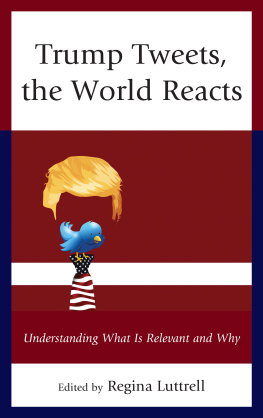

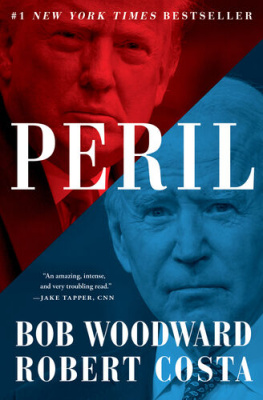

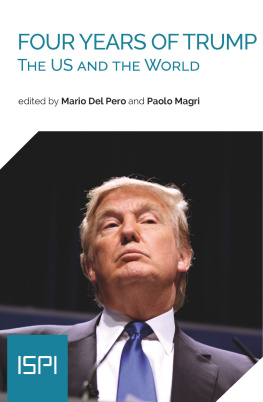
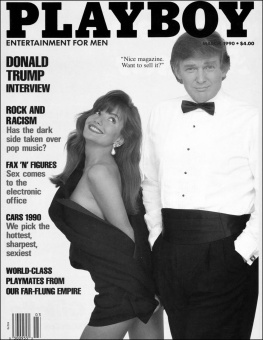
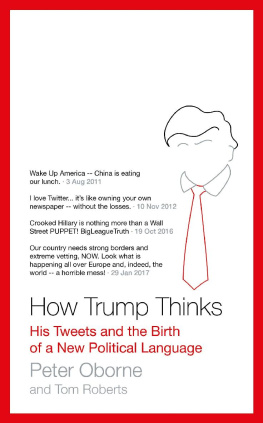
 The paper used in this publication meets the minimum requirements of American National Standard for Information SciencesPermanence of Paper for Printed Library Materials, ANSI/NISO Z39.48-1992.
The paper used in this publication meets the minimum requirements of American National Standard for Information SciencesPermanence of Paper for Printed Library Materials, ANSI/NISO Z39.48-1992.